64 Audio U6t Dual Perspective Review: Resolve and Fc-Construct’s Take

Review written by @Resolve and @Fc-Construct
Edited by @Fc-Construct
Loaner unit provided by headphones.com
Pre-Introduction
This review will be a bit of a different one – a combination piece between Resolve and Fc-Construct independently reviewing the 64 Audio U6t to give two perspectives within the same review. It turns out we both had the U6t on hand and were working on our reviews separately, and rather than putting out two separate pieces we figured we'd give our respective thoughts together in a joint article. We hope this review format will keep things a little interesting despite its length!
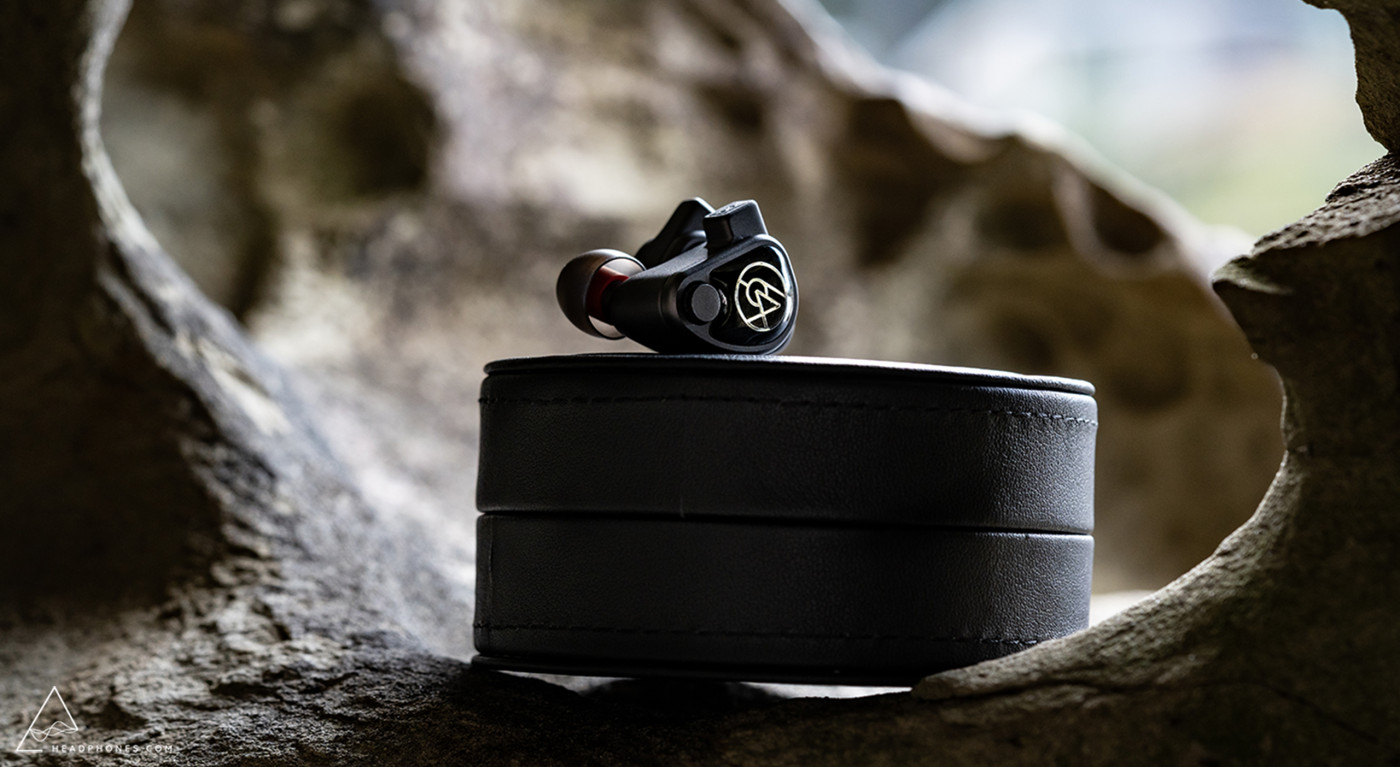
 |
Get the 64Audio U6t for the best available price at headphones.com. |
Introduction
Resolve: When I first got my hands on the 64 Audio U6t, I did a first impressions video in collaboration with our IEM specialist Precogvision who happened to be listening to them as well. But that video was exactly that - a first impression. Being a busy headphone reviewer, I didn't get a chance to spend a lengthy period of time with the U6t until recently, and boy was that ever a mistake. I went on a trip to one of the gulf islands near Vancouver and took the U6t with me to put it through significantly more paces than I had on my initial impressions. And, while I knew I liked them from that first listen, I didn't fully realize just how much.
Fc-Construct: I’ve been making my way through the 64 Audio IEMs, with the excellent 64 Audio Trio being the latest one I reviewed. Though the $1,300 U6t is better viewed as a baby U12t, I’m curious to see if the U6t can stand up to the high bar set by my experience with the Trio. This will also be the first all-BA IEM from 64 Audio I listen to, with six balanced armatures equipped with 64 Audio’s tech making up its configuration.
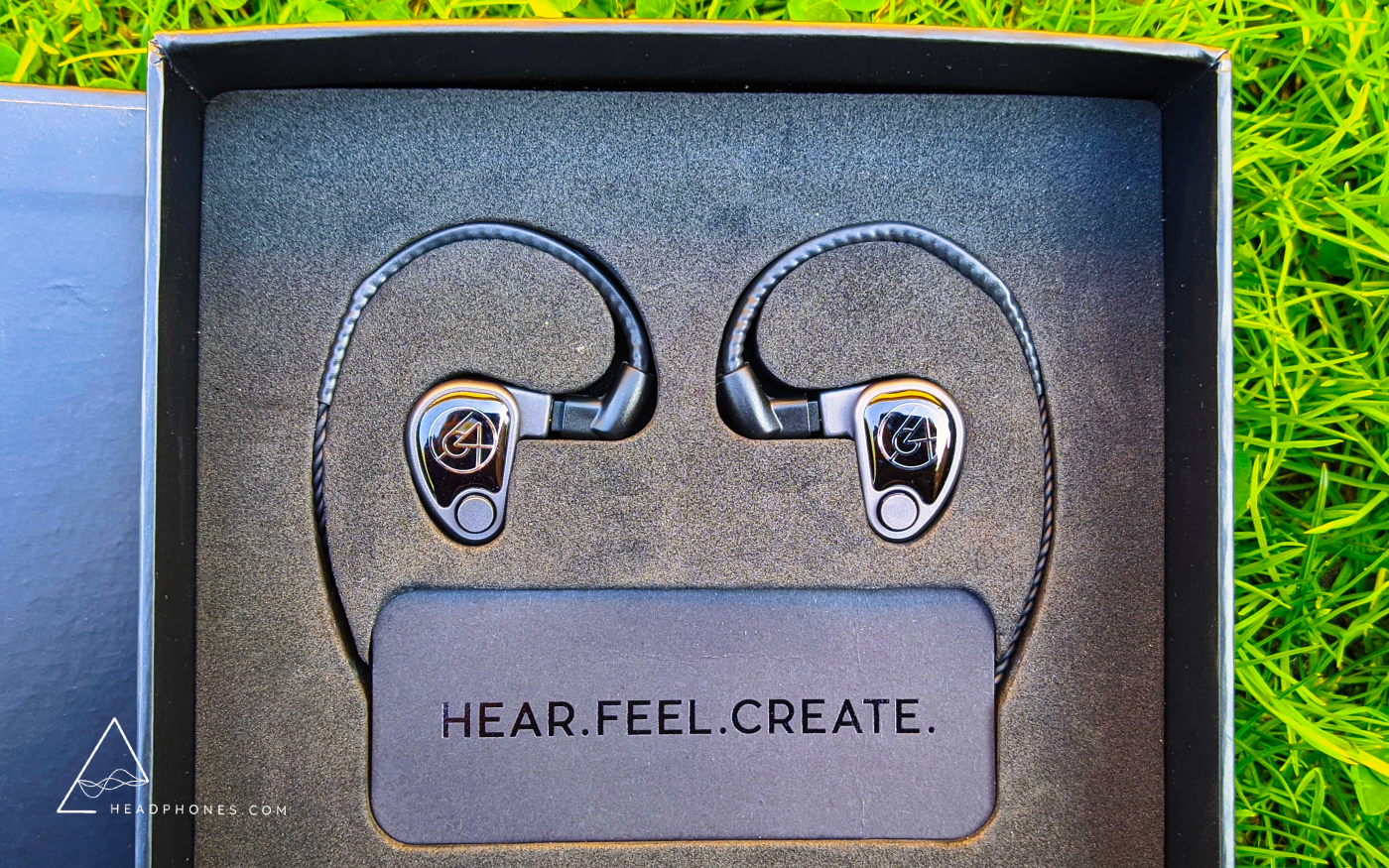
Build and Comfort
Resolve: The 64 Audio U6t uses the standard 64 Audio shell design that we've become familiar with. It fits well for me, though not quite as comfortable as some more contoured designs. Of course, the risk in doing that is that it might be less of a general fit, and therefore be totally unusable for some listeners. So it's an acceptable design on the U6t that's likely to work for most people. Aesthetically, it's just a simply gloss black faceplate - my kind of thing.
You do also get to use 64 Audio's APEX modules, which change the bass tuning depending on what you're after. mX gives you the least amount of bass, m20 gives you the most, and I preferred the m15 middle ground. I should note, the m15 and m20 are closer than either are to the mX. For more information on the APEX modules, check out Precogvision's review here.
The U6t's cable is also a welcome upgrade from their previous, stiffer designs. While still not quite as nice feeling as what you get from Dunu's high end cables, it's still much better than before, and totally usable. You also get a more normal carrying case than the plastic organizer from before, and a wide range of different tips to use.
Fc-Construct: Like the Duo and Trio, the comfort of the U6t is great as it boasts a similar shell geometry. One minor difference is the nozzle’s shape which places it as close to your eardrum as possible instead of having a small gap with the ear tip. As usual, their vented nature that prevents pressure build-up, making it possible to have the U6t in ear for extended periods of time without fatigue. Cable is… fine. It’s the same that comes with the 64 Audio Duo. What’s different with the U6t is its APEX modules that change its bass response, something I’ll touch on towards the end of the review.
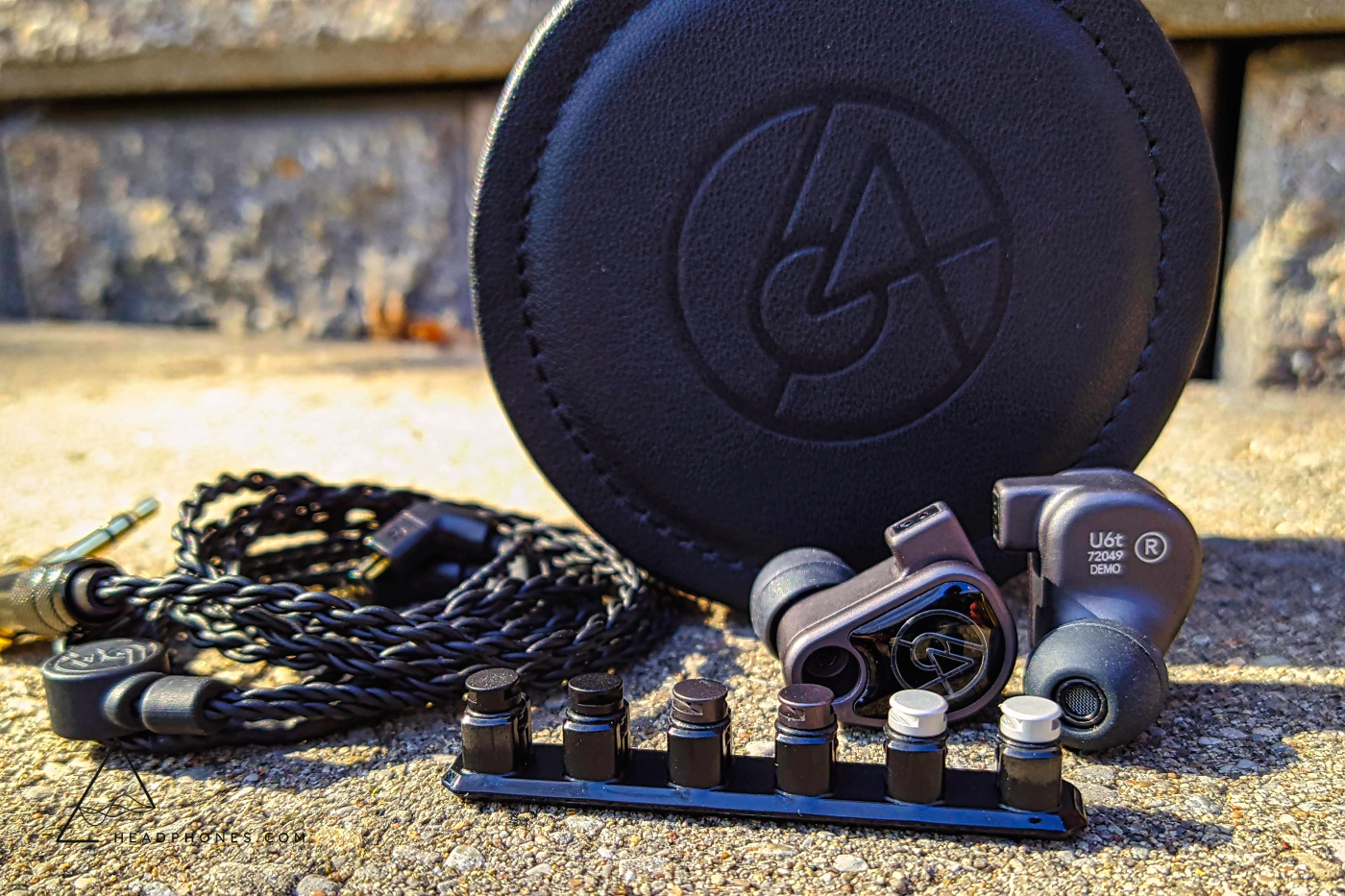
Sound – Tonality
Resolve: This description is going to be a bit different from my usual breakdown of sound quality. The reason for this is mainly because the 64 Audio U6t reminds me so much of the experience of listening to some of my favorite over-ear headphones, the HiFiMAN HE500 and HE6. And, I have to be careful with how I say that, because I do not mean to say that they sound the same, but rather my appreciation for them is for similar things. Let me explain.
The U6t has a kind of overall tonal balance that lends itself to clarity, while not being overly fatiguing or shouty, which is a common issue for me with most 'good' IEMs. While I recognize the merits of more typically 'neutral' IEM tunings with strong ear gain up to 3 kHz for most people, it's likely I have an ear canal that overamplifies that region with the way most IEMs fit for me, causing me to perceive them more shrill in the upper mids. The 64 Audio U6t doesn't give me this problem at all.
At the same time, this IEM, just like the HE500 and HE6 over-ear headphones (which do have a strong sense of clarity due to an elevated ear gain region around 3khz), is exciting to listen to in just about every way I can think of. There's a kind of 'take your head off' character to my music when listening to these devices, and that's without compromising on the overall harmonic balance.
The bass hits hard - for a balanced armature driver setup. It's not as punchy as something like the Dunu Luna, but it certainly inherits some of the U12t's excellent lower register tactility. Similarly, while the treble is still generally balanced and detailed sounding, it's just ever so slightly forward on the upper edges of tones, creating an extra sense of articulation to cymbal hits for example.
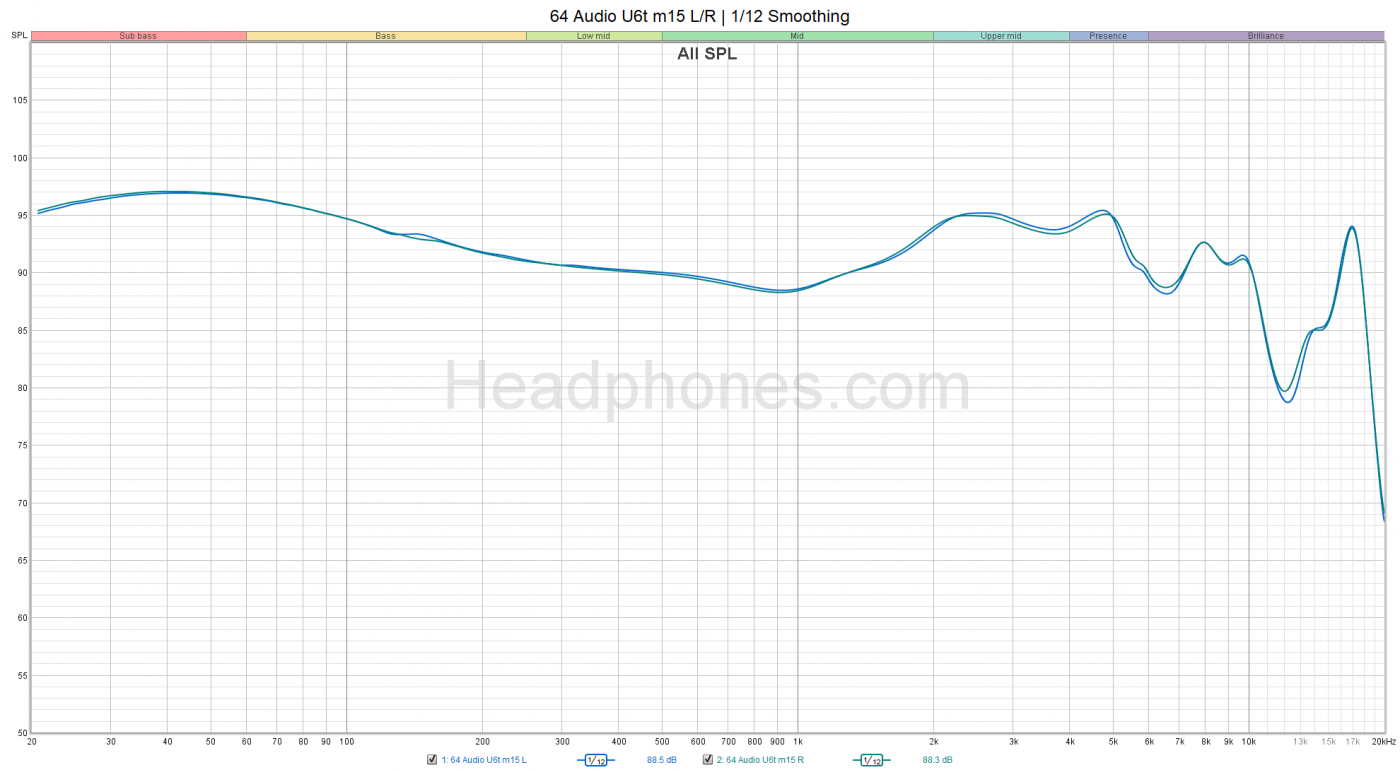
Frequency response of the 64 Audio U6t with the m15 APEX module. Measurement taken with an IEC-711 clone microphone. Comparisons can only be made relative to other measurements taken by this specific microphone. A peak at about 8 – 10 kHz is likely an artifact of the measurement rig and may not exist as depicted here. Measurements above 8 kHz are not accurate. If possible, reference multiple measurements.
Fc-Construct: Using the stock m15 (dark gray) module, the U6t is engaging right from the get-go. Its bass is the first thing that comes to mind, dominating the frequency response with weight and presence. There’s often a lot of talk about BA bass in IEMs and 64 Audio having a reputation for having some of the best implementations out there. I can confirm that, despite some initial skepticism, the U6t’s bass is very well done. Drums are boomy and impactful and each note of the kick and low toms are felt as well as heard. However, I felt that the U6t starts to strain at the very end of the tone, losing the control and depth found in the body of the kick/tom note.
Beyond the bass, the overall tonality of the U6t can be described as warm. There’s a healthy amount of upper mids to balance out the bass and lower mids elevation, giving the U6t the clarity it needs to remain engaging through various genres of music. Tonal balance is solid and instrument timbre is on point. The upper mids gain is carried till the lower treble 5 kHz mark before being subdued the mid and upper treble. This makes hats and cymbal notes sound light to the touch but maintains a clean edge to them. The U6t thus has a generally laid back and balanced treble response. Vocals don’t have a hint of sibilance but do take a warmer tone without as much of a ‘breathiness’ to them.
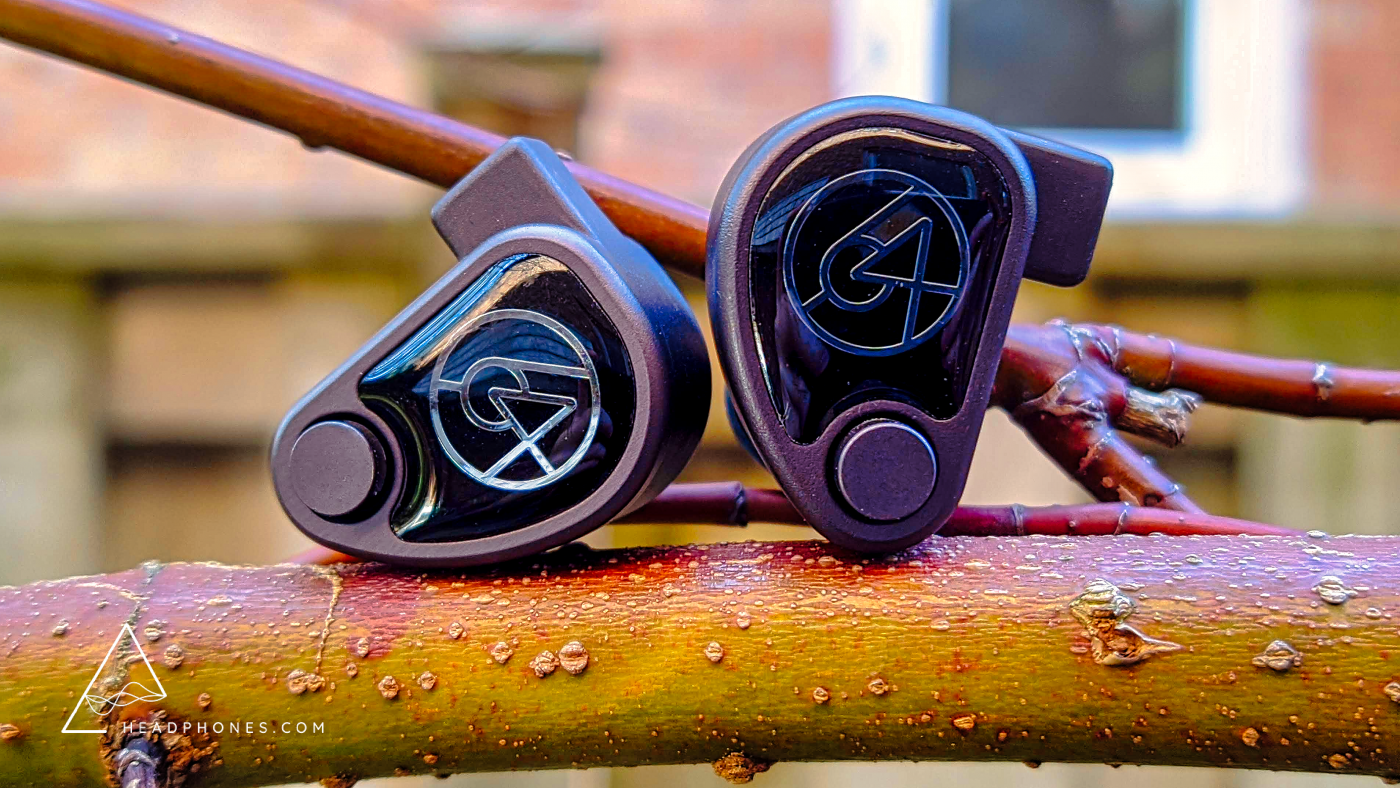
Sound – Technical Performance
Resolve: Then there's detail. For the ability to isolate and identify the finer little nuances in the music, the U6t isn't quite on the same level as the Unique Melody MEST, but it's also very close - close enough to where I'm not left wanting more, and it does so with what is in my opinion a more balanced overall sound.
Image distinction and sense of depth I also found to be quite good. Again, this is where I think there may be in-ear headphones that are more 'holographic' for the price, but I still give the U6t solid marks for overall sense of space.
I hesitate to say the U6t is like an IEM version of the HE500 or HE6, because there aren't enough similarities among them, however, the things that stand out to me on those headphones also stand out to me on the U6t. It walks the line between a smooth sound and one that grabs your attention. Oftentimes more direct descriptions of a headphone's sound quality lean into more clear and obvious narratives of "smooth" or "intense", and the U6t demonstrates that there are ways in which both of those descriptions can be true of the same product. And, that's also where being able to appreciate that nuance is key.

Fc-Construct: On a technical level, the U6t is the very solid for the price and about on par or slight behind other kilobuck benchmark IEMs such as the Symphonium Helios or Sony IER-M9, though in varying ways. Like the Duo and Trio, the U6t’s staging is solid. It has a well-rounded 3D-like presentation and a good sense of space. No complaints here.
I do think the U6t’s resolving ability does fall a little short of the Helios or M9 but interestingly, it has strong ambient detail retrieval. Little notes that float around in the background are accented with the U6t. Though it doesn’t happen in every recording, it adds a very welcome touch of flavour to familiar songs. Finally, it would be remiss not to mention the dynamism of the U6t. Though it’s not to the level of the Trio, the U6t is really quite engaging in a way that elevates it from standard IEMs but manages to be non-fatiguing and easy-to-listen to.
Comparisons
Resolve
In my view, while the 64 Audio U6t isn't a straightforward upgrade to the CFA Andromeda, it's what I'd get instead if I could swing a few extra hundred. The U6t is a little bit more balanced for its mids, while still being relaxed, but more importantly it's also significantly more engaging down low, with noticeably better contrast and punch. For spaciousness, things swing back in favor of the Andromeda, but for image separation and distinctness, they're about on par for me - which is to say... very good.
My pick? the 64 Audio U6t is definitely the more engaging sounding IEM to my ear, but it's also a bit more expensive and the Andromeda is still a decent pick for those wanting a relaxed presentation.
This one is interesting, but also fairly straightforward. The MEST is more detailed, but the U6t has a better sense of contrast and a more balanced tuning. Now, when I say more balanced, that's uniquely aimed at the mids and treble. Some may prefer the further colorations of the MEST, but the U6t sounds more realistic for its tuning.
My pick? Easily the U6t, however for those wanting a V-shaped or U-shaped kind of sound, I can absolutely see a preference for the MEST
The analytic version of 'neutral with a bass boost'. This has been one of my favorite IEMs of the year so far, and it does keep up with the U6t in many regards, if not exceeds it for some. While I prefer the slightly more relaxed tuning of the U6t, and certainly prefer its treble tuning, I also have to recognize that for certain genres and recording styles, the Monarch MKII would likely be a better reference point. In that regard, the Monarch MKII is less flashy and ear-catching than the U6t - the U6t gives that feeling of listening to a more attention-grabbing piece of equipment. But for things like detail and all the subjective qualities, the Monarch MKII is up there with the U6t to my ear.
My pick? This one is tough. I think if I want more of a reference or analytic style sound, I go for the Monarch MKII. For pure fun, I go U6t.
Also an IEM that goes for neutral with a bass boost - with a more significant bass boost than most. For whatever reason, I found the Divinity to be merely good, but not great. It just didn't have the technical chops to hang with even the less expensive Monarch MKII to my ear. This could be down to it having a thicker presentation in the midbass, and I've heard from people who actually prefer it over the Monarch for this reason. And I get it, it's less of an analytic presentation.
My pick? Definitely the U6t
You know how I mentioned the U6t walks the line between smoothness and intensity? The U12t is like that, just kicked up a notch, and tilted more in the direction of smoothness. It's got a slightly more refined tonal balance overall, a slightly less intense bass shelf, and more focused treble. But for many of its other aspects, there's a strong familiarity between the two. Both are very punchy sounding IEMs - especially for balanced armature setups, both are detailed with great image separation.
My pick? Still the U12t. I've heard a lot of IEMs, and I can still confidently say that if someone were to hand me all of them and say "pick one", I'd still end up going with the U12t. There are some out there that I'd say are better at one thing or another, but for IEMs with that specific type of tonality - the more relaxed ear gain region - the U12t is still the king.

Fc-Construct
APEX Modules – m15, m20, and mX
The U6t comes with three sets of APEX modules, the m15 (dark gray), m20 (silver), and mX (black) modules. Each set will run you a cool $100 on 64 Audio’s website. I suppose this represents a $300 added value from 64 Audio’s perspective. At any rate, each of these modules are essentially tuning filters that primarily modulate bass response. The m15 and m20 modules are very similar with the exception of a tad more subbass elevation on the m20. I won’t comment much on the m15 vs. m20 as the only real difference between them is a minor amount of added subbass rumble and decay on the m20. Practically speaking, this makes the m15 slightly cleaner on some recordings while the m20 has more low-end grit. Choose according to your music.
The mX module is unique as it removes a significant portion of the U6t’s bass response and affects the crucial upper midrange region. It thus transforms the U6t into a much more neutral IEM. Bass response shifts primarily into the midbass. What’s impressive however is that the U6t doesn’t lose its sense of dynamism. Even without its subbass, the U6t delivers impact where it’s needed. The upper mids adjustment adds even more clarity to U6t while technical prowess is maintained throughout. At first, I wasn’t sure if I would like the change in tuning but found it was quite enjoyable. I can definitely see someone swapping to the mX module if they wanted to freshen their palate with a different signature for a bit.
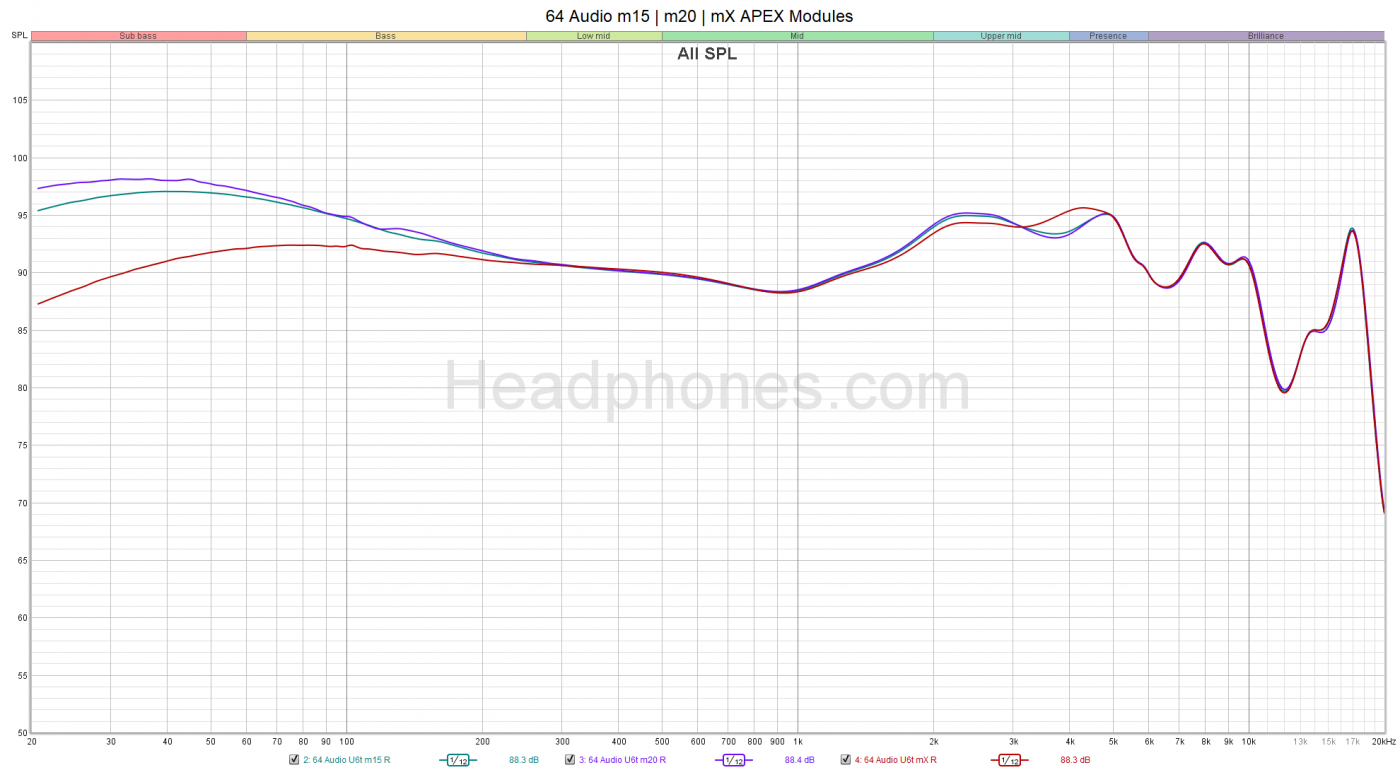
Symphonium Helios and Sony IER-M9
The Helios is an intense IEM with a neutral-bright sound signature and a subbass focus. As such, it’s on the opposite end of the spectrum as the U6t when it comes to tuning and that should be your primary consideration when picking between these two kilobucks. On a technical level, the Helios clearly wins on the resolution front. Staging is about the same for both but the U6t has a better sensation of spaciousness given its vented nature with the APEX module. While both IEMs have a good sense of dynamism in their BA-driven bass, it differs in where it comes from – subbass vs. midbass. I personally prefer a little more midbass energy but your preferences may vary.
Representing the flip side, the M9 is a very warm IEM, moreso than the U6t. I think the U6t’s smoother overall tuning is more preferable than the M9’s. Despite the warmth, the M9 has better vocal clarity especially when coupled with its upper treble extension to give air to the vocals. Similarly, hats and cymbals have greater brilliance and better timbre than the U6t. In terms of staging, the U6t has slightly more of that 3D-like, spaciousness to it while the M9 pulls ahead in its imaging. For resolution, the M9 pulls ahead of the U6t with a greater sense of coherency and instrument separation. The biggest difference I think between these IEMs is their bass dynamics. The U6t’s implementation is impactful and well suited to pretty much anything you throw at it. The M9’s unique bass implementation has blunt transients, limited dynamics, and lengthy decay. It falls flat on certain songs but brings a profound sense of depth and nuance on the right recording.
Overall, I think the U6t manages to land in the goldilocks zone between the Helios and M9. I don’t think it’s the superior IEM than either of those two but represents the “easy” option for most people – it’s comfortable and pleasant enough to get engaged in your music and forget about nit-picking sound quality. If I could pick, I’d go with the Helios first with the M9 a draw for second. The lack of dynamics on the M9, its occasionally flat bass, and recording dependency is what holds it back.

Conclusion
Resolve: At the moment the U6t is my favorite IEM around its price point, so this is one that gets a strong recommendation from me.
Fc-Construct: The 64 Audio U6t is an excellent addition to 64 Audio’s lineup and while I personally enjoy the Trio quite a bit more, the U6t is a solid gateway to the kilobuck space. The included APEX modules are a nice addition for a few tuning options to help you find the best fit for your music. You’ll find it hard to go wrong with the U6t.
---
Buy the 64 Audio U6t at Headphones.com for the best available price.
Discuss the 64 Audio U6t on the HEADPHONE Community Forum here.
---
